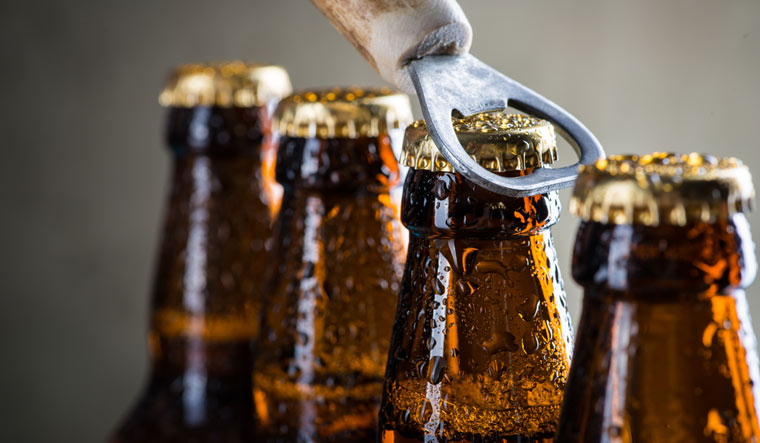Brewers are pursuing solutions to reduce water usage, encourage more sustainable farming, limit material use, and power facilities with clean energy.
What does torched earth taste like? According to New Belgium Brewing Company's CEO Steve Fechheimer, it tastes like eating a Band-Aid". In 2021, New Belgium wanted to raise awareness of the impact of climate change on America's favourite alcoholic beverage. The result: Torched Earth, a beer brewed with smoke-tainted water, buckwheat, and dandelion root. A bitter warning to consumers of what beer could taste like in the not-so-distant future.
Beer production relies on water, barley and hops. But climate change is leading to scarcity of these key ingredients. This raises the price brewers must pay for production and increases beer prices for consumers. Climate change can also affect the quality of ingredients, meaning brewers may have no choice but to resort to inferior products.
With beer potentially costing more while tasting worse, this is not good news for hopheads.
But that's just the tip of the iceberg. Water comprises 90 per cent of beer inputs, meaning water quality is front of mind for brewers. Polluted waterways cause this delicate resource to become unusable or, at the very least, more expensive to treat.
It can take seven barrels of water to produce a single barrel of craft beer nearly a gallon of water to produce a single pint. As rivers dry up, water scarcity becomes a major threat to this water-intensive industry.
Shifting climate zones also lead to more unpredictable weather patterns and extreme weather events, increasing pest and disease pressures and greater strains on agricultural markets.
In the United States, barley and hops are primarily grown in the upper-west region. Over 75 per cent of barley comes from Montana, North Dakota, and Idaho states that are becoming more susceptible to the combination of excessive heat and drought. These factors have altered farmer planting decisions and impacted barley yield. It's estimated that barley production in 2021 was down 31 per cent from 2020, and this shift in market conditions leads to elevated prices across the supply chain.
The United States accounts for approximately 40 per cent of global hop production. Approximately 96 per cent of the 60,000 acres are grown in the Pacific Northwest Washington, Oregon, and Idaho and the hop giant's climate is changing. Changes in temperature and precipitation can alter the crop's chemical properties, which impact flavour, taste and aromatic qualities of the finished beer product. The region is also becoming increasingly vulnerable to wildfires.
By mid-August 2021, nearly 80 wildfires had burned through more than 1 million acres in Washington and Oregon. Fires can destroy hopyards, but the smoke and ash can also affect hop quality, leading to smoke taint. This condition creates unwanted sensory attributes in the hops such as tar and burnt toast while masking the desired aromas like citrus or pine.
Whether through brewing Band-Aid-tasting beer, environmental-themed beer packaging or marketing campaigns, brewers are bringing sustainability and environmental consciousness to the forefront of the industry. They are reducing their environmental footprint by tracking sustainability metrics, publishing sustainability reports, and investing in sustainable technologies.
The Brewers Association, the primary craft beer organisation in the United States, has created sustainability manuals to help brewers navigate energy, water and solid waste. Investments geared towards sustainability include low-cost practices like reusing rinse water, installing energy-efficient lighting systems and donating spent grain to local farmers.
More advanced investments include automated cleaning systems, solar panels, electric vehicles for transportation and converting spent grain into upcycled foods. The scale of investment depends on brewery size and location, with individual brewers balancing decisions between both sustainability and business standpoints.
Regardless of scale, informing consumers of brewer commitments to sustainability through company websites, social media accounts or labelling may be beneficial. There is recent evidence that some consumers are willing to pay a premium for beers produced using sustainable techniques, particularly for beers targeting water sustainability practices.
On the agricultural side, there has been increased investment in scientific research for selective breeding, the development of climate-resilient crop varieties and regenerative agriculture. And as climate regions shift, agriculture adjusts, leading production to shift towards more favourable growing regions.
America's beer industry was built on innovation, experimentation and entrepreneurship. Each of these defining features will be important as the industry combats impending climate challenges.
(360info: By Aaron J Staples, Michigan State University)





